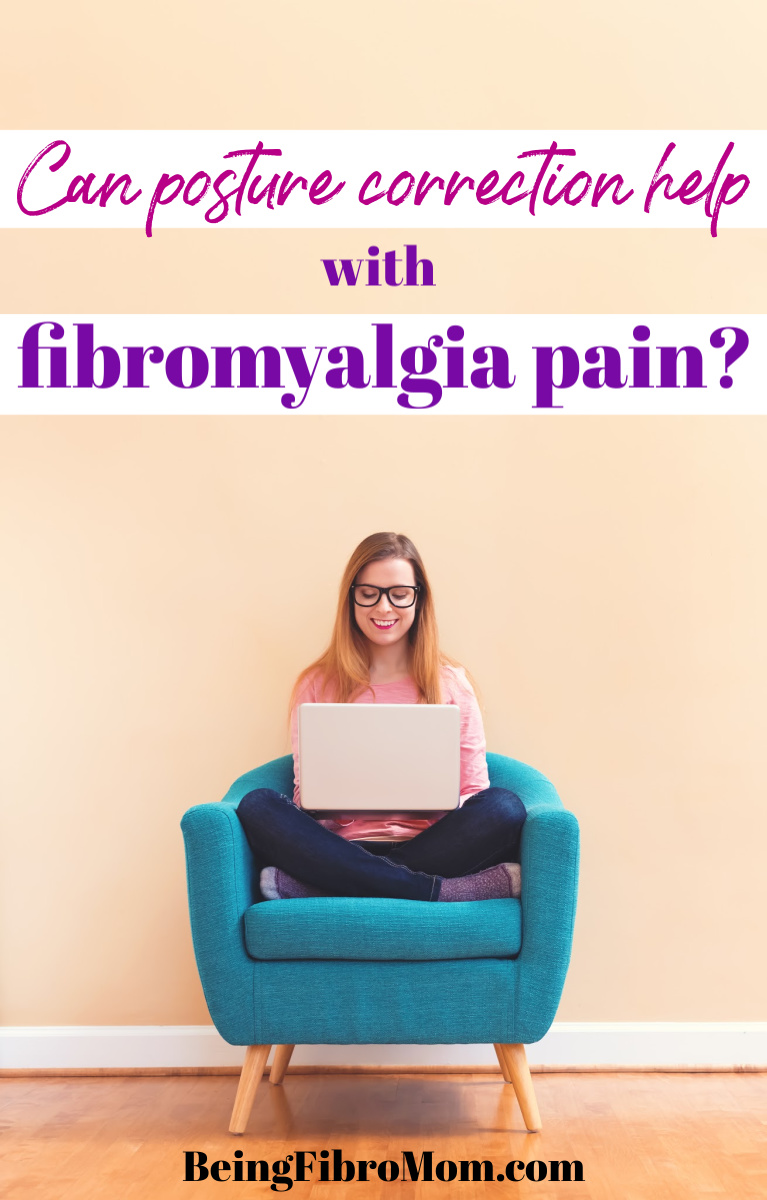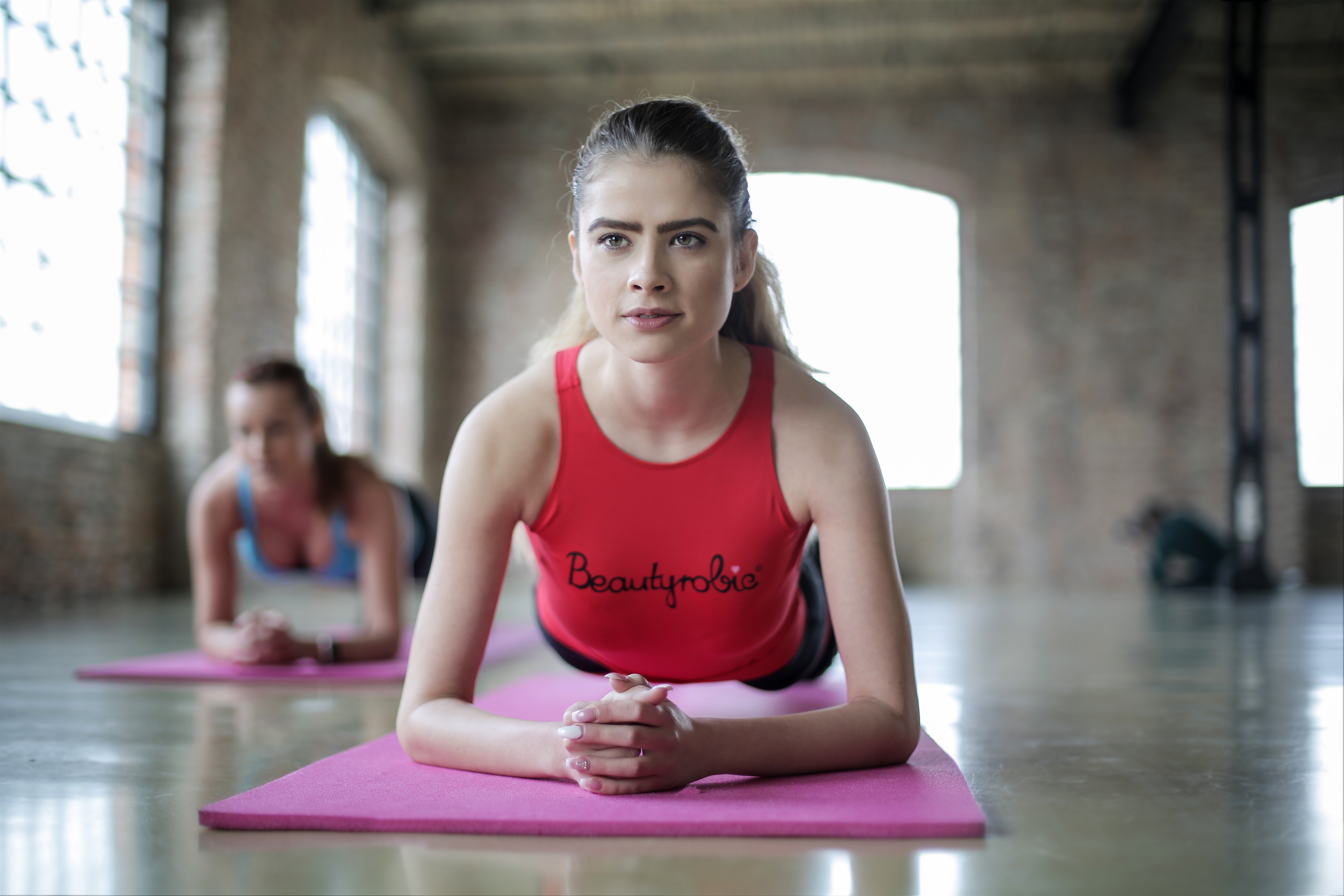Your spine is the central communication center for your entire body. And your posture is a key signal of your spine’s health. When your posture is out of alignment, it means that your overall health may also be out of balance. Having poor posture can exacerbate health problems and make it more difficult for you to recover.
If you’re struggling with fibro pain, you may want a full posture check-up. The way you’re sitting, standing and sleeping could be holding your body back from its full energy potential.

Why is posture important for your health?
We often think that posture is no big deal, but nothing could be further from the truth. According to the American Chiropractic Association, maintaining good posture can have important impacts on our body’s functioning. For example, good posture can:
- Keep your body in alignment so that joints don’t rub together or wear down
- Reduce stress and strain on joints and muscles
- Maximizes muscle and body function
- Boost energy levels due to body efficiency
In other words, good posture can make your body run smoothly and save energy. Of course, the opposite is also true. Bad posture can hurt your body by putting a strain on muscles and creating unnatural positions. In addition, it can negatively affect your energy levels and focus, as well as the cause:
- Pain in your back, neck, and shoulders
- Joint pain or arthritis
- Fatigue or lack of energy
- General muscle strain
Bad posture makes your muscles work inefficiently, so you end up using more energy than you need to. Moreover, slouching can limit your breathing, making you take shallow breaths that can impact your blood flow and energy.
What do you need to maintain a good posture?
Maintaining good posture isn’t easy, but once you create good posture habits, you’ll feel great. First, good posture means being aware of your body’s position. Are you slouching? Sticking out your chin? Putting your weight on one foot? You won’t be able to correct your posture without this kind of mindfulness.
Second, you’ll need physical support to maintain good posture throughout the day. Physically, you’ll require good muscle flexibility and strength, normal spinal motion and balanced muscles along the spine. If you don’t think you have the physical level to maintain good posture, you should first work on building core and lower back strength in order to better support your spine.
What external factors can affect posture?

There are several factors involved in correcting posture, including external factors. Let’s first take a look at external factors that can cause you to slouch or contort your body.
- Feeling stressed: Stress can tighten your muscles, making them tense and strained. Try to reduce your stress levels during the day to keep your muscles relaxed.
- Being overweight or obese: Excess weight can put pressure on your joints and muscles. It’s important that you shed some pounds to help improve your posture.
- Having weak postural muscles: If you don’t have the strength to hold up your body, you can start by strengthening your core in a yoga or pilates class. Your core and lower back muscles are the main support system for holding your body weight.
- Working in an uncomfortable space: You may be slouching at the office, which can affect your posture all day long. Set up your office space so that your chair supports your back, your computer screen is at eye level and your keyboard is in easy reach. In addition, try using a headset instead of cradling a phone.
- Wearing high-heeled shoes: Finally, high-heeled shoes can change your center of gravity and increase strain on your muscles. Avoid using high-heels if you want to improve your posture. You can also try a lower heel or inserts.
What does good posture look like?
Generally speaking, good posture means that your body is naturally aligned. You can make a habit of good posture by thinking about sitting, standing and lying down positions:
- Sitting: Your presence should be relaxed, with your feet on the floor and your body all the way back in the chair. Your arms and shoulders should be down and loose. Try to avoid crossing your legs or sitting for too long.
- Standing: Again, your body should be loose, with your shoulders down and your knees bent slightly. You should stand tall with your weight evenly distributed and your feet shoulder-width apart. Remember to keep your head and chest in natural alignment.
- Lying down: Sleep on your side or back, while using a pillow and a firm mattress. Avoid sleeping on your stomach.
By remembering what good posture looks like, you’ll have an easier time correcting yourself.
What is posture correction?

Posture correction entails several key steps. First, you can eliminate external factors affecting your posture and self-correct your posture during the day. In addition, you can do daily posture exercises and see a chiropractor. It’s important to do posture correction both at home and with a professional.
At home, you can boost your posture with a daily exercise program. The NHS recommends postural exercises including:
- Plank: Place your hands and feet in the push-up position. Your hands should be under your shoulders and your toes touching the floor. Lift your body and align it in a straight position. Look down at the floor to avoid neck strain.
- Bridges: Lie down on your back with your knees bent. Your feet should be flat on the floor. Lift up your hips and align them in a straight position.
- Back extensions: Lie on your stomach and position your elbows bent facing forward. Then, lift your upper body by arching your back.
- Pull-ups: Stand against a bar, rail or fence. Hold onto the bar and lean back. Then, using your core, return to the starting position.
- Chest stretches: Lace your fingers behind your back, with your shoulders loose and down. Feel the stretch in your chest.
- Neck stretches: Roll your chin from shoulder to shoulder slowly, holding the position.
- Shoulder rolls: Move your shoulders all the way back and down, then move them in a circle slowly. You should feel the stretch.
- Chair pose: The chair pose, like many yoga positions, is great for your back and abs. Place your hands straight over your head. Then sit into the position and hold.
Besides these daily exercises, you should also complement self-care with a regular chiropractic appointment. By visiting a professional chiropractic clinic – like Better Health Chiropractic & Physical Rehab in Anchorage – you can get the adjustments your body needs to get balanced. An expert chiropractor will look to restore balance in your spine, as well as recommend an anti-inflammatory diet, specific exercise program, any pain relief supplements, and stress-reduction therapies. This comprehensive care plan – especially the adjustments – can get your body on track and significantly improve your posture.
Can Posture Correction Help With Fibro Pain?
Posture correction can be a game-changer for those suffering from fibro pain. Fibro is characterized by pain and fatigue, including dull muscle aches, problems sleeping and a lack of concentration. These symptoms can be disruptive to your day-to-day life and leave you feeling tired, unfocused and achy.
Because there’s no medical treatment for fibro beside painkillers, it’s essential to look at lifestyle changes in order to overcome fibro symptoms. While experts recommend a long list of pain relief actions – including exercise, yoga or Tai Chi, better sleeping habits, an anti-inflammatory diet, and supplements – one of the best ways to help your fibro pain is to straighten up. If you can get your body in alignment, you may see improvements such as:
- More efficient muscles, causing better energy levels
- Better alignment, reducing pain
- Reduced achy muscles
- Easier time getting to sleep
Of course, posture isn’t a cure-all and you may still experience fibro symptoms. But posture can go a long way to helping your body run more smoothly and reduce muscle aches by boosting body efficiency.
Final tips
We’ve looked at all areas of posture correction and how you can get fibro pain relief by straightening up. If you feel overwhelmed by the amount of information for correcting your posture, try following these five key steps:
- Set an alarm for a posture check: Create a reminder alarm to make sure you’re sitting, standing and lying down with good posture.
- Start your morning posture routine: Use our posture exercises to start your morning every day.
- Organize your workspace: Make sure your workspace is free of bad posture triggers.
- Sign up for Tai Chi: Take a Tai Chi class to strengthen your postural muscles.
- Consult a chiropractor: Discuss your fibro pain with your chiropractor and see what adjustments and therapies can be used to relieve pain and enhance your posture.
We hope boosting your posture will help reduce your fibro symptoms. Balance your body and get your energy back!
About the author, Dr. Brent Wells
Dr. Brent Wells, D.C. is the founder of Better Health Chiropractic & Physical Rehab and has been a chiropractor for over 20 years. His practice has treated thousands of patients from different health problems using various services designed to help give you long-lasting relief.
Dr. Wells is also the author of over 700 online health articles that have been featured on sites such as Dr. Axe and Lifehack. He is a proud member of the American Chiropractic Association and the American Academy of Spine Physicians. And he continues his education to remain active and updated in all studies related to neurology, physical rehab, biomechanics, spine conditions, brain injury trauma, and more.
